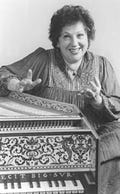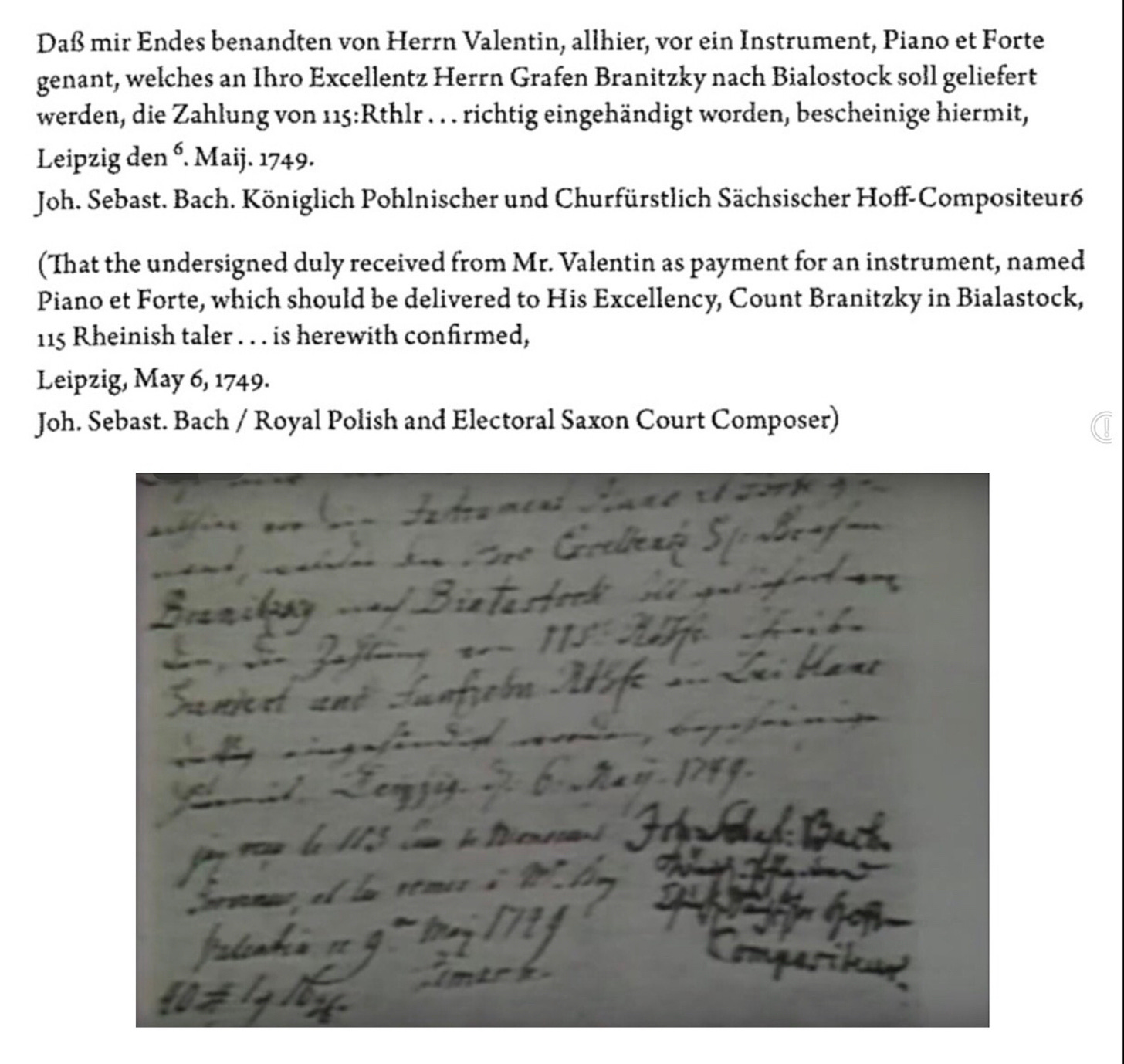Surprising lesson of harpsichordist Laurette Goldberg on piano performance of J.S.Bach’s music for clavier
Every pianist, who plays Bach, can benefit from trying out his music on harpsichord, in order to understand that Composer, who suddenly began exploring the promising novelties of hammer clavier(s), had previously developed the habit for a different type of action within the keyboard. Such action didn’t use gravity, as the driving force of sound production, and didn’t call for related technique…
And my first epiphany was from having to slow down the very fast speed in upbeat pieces, since it was impossible to achieve on the much slower action. I began to grasp this through my senses and no verbal explanation was needed on this…
Indeed, I came to experience that Bach’s skills of playing keyboards had the imprint of forming not on the hammer clavier. Like any other harpsichord player, he had to use the subtleties of rubato, that is employed on this instrument, in order to strive to overcome at least in some ways the lack of dynamics for creating the emphasis for micro-phrasing.
I came to realise all this, when I came to visit well known harpsichord performer and teacher Laurette Goldberg at her teaching studio, located right in my neighbourhood of famous university town Berkeley…
I would never forget her assuring remark with her “official” scholarly permission for using “…agogic rubato MORE, NOT LESS, in the face of lacking dynamics for emotional expression on the keyboard, including pianos…” My face must have been ver perplexed by such unexpected concept. But her face lit up with the expression of delight, pride and satisfaction, as if she read my mind on the the sense of gratitude for the immediate emergence of the feeling of emotional liberation from years of tormenting tabu on emotional expression in Bach. She seemed to know, what I didn’t have to explain with words - the sense of the paradigm shift that couple of her words triggered… And she must have known that a piano player will never forget such moment, when she shared this “magic key” into the hidden before entry into the world of Bach’s polyphony. By the time I met her in person, she had shared with many pianists this special “spell” that opened the gateway into the new dimension for the complexities of polyphonic texture of Bach, that distinguished his music from his contemporaries.
However, such expansion of sonic depths could not be possible without the great variety of sound colours, thanks to the wide range of dynamics, allowed by the newly emerging technology for hammer clavier.
Every single time, when I’d pass by her house on the busy intersection, I’d remember this gift that Laurette passed to me, knowing that I’d pay it forward… And since I knew her personally, I have no doubts, that if Laurette was still alive today, she would be among the first to celebrate the occasion of rediscovery of invisible dissonant sonorities in Bach’s Laughter Test, that he included into his didactic cycle of Book 1 of Well-Tempered Clavier. She was the trailblazer type, who would immediately immense herself into rewriting of her pianist’s guide on Well-Tempered Clavier, based on the discovery of the Paradox of invisible dissonance. And so would many other late authors, who would use the reissue of their publications, or/and new books and article, as the opportunity to teach the world one of the most desperately needed capacities - how to handle error corrections with self-deprecating humor and with no bitterness of retaliation to change…
Such lessons are never forgotten by students and audiences. And the need for such new attitude demands for the special spotlight for spreading such constructive mind shift, celebrating courage over the innate fear to make mistakes, while encouraging pride for correcting them. Indeed, it can be the act of velour in many circumstances, due to the tradition of punishment for making errors, that is central for the current educational system, instead of rewarding voluntary correction of mistakes, that are inevitable for all users of evolutionary young human brain…
Laurette Goldberg would have mentioned Bach’s Sales Receipt for selling PIANO ET FORTE to count Branitsky, if she knew of its existence. But this document has not been made widely and easily available to the public, even including such scholars like her…




